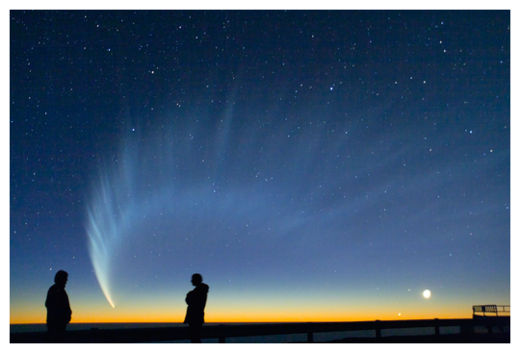OF THE
TIMES
Comets are like cats; they have tails, and they do precisely what they want.

Comets' influence on cultures is not limited simply to tales of myth and legend, though. Comets throughout history have been blamed for some of history's darkest times. In Switzerland, Halley's Comet was blamed for earthquakes, illnesses, red rain, and even the births of two-headed animals.
The Romans recorded that a fiery comet marked the assassination of Julius Caesar, and another was blamed for the extreme bloodshed during the battle between Pompey and Caesar. In England, Halley's Comet was blamed for bringing the Black Death. The Incas, in South America, even record a comet having foreshadowed Francisco Pizarro's arrival just days before he brutally conquered them.
Comets and disaster became so intertwined that Pope Calixtus III even excommunicated Halley's Comet as an instrument of the devil, and a meteorite, from a comet, became enshrined as one of the most venerated objects in all of Islam.
Comment: 'Once-in-a-lifetime comets'? What an anachronism! A quick search through our database clearly tells you that the inner solar system has been liberally sprinkled with comets in recent years!... And at the rate more and more are being discovered and being predicted to be "visible in daylight", like Comet ISON this November, it looks like there are plenty more comets to come...